
Keynote: Iain Boal
Drawn from Nature: Extraction, Commodity and Commons
Given in the Methodist Church on Chapel Street in Penzance, Iain Boal‘s keynote compared Cornwall and the northern California littoral as zones of extraction. It traced the legacies – environmental and social – of mining and fishing considered as industries tied into a globalised market, by drawing out the paradoxes of depletion and sustainability, of tourism and the heritage industry, of regional autonomy and centralised subsidy, of lived reality and the mythos of the far West.
Though it was never an ambition of mine, I admit, to address a congregation in a Methodist church, I am truly delighted to be standing before you in this handsome gathering place – built by the followers of John Wesley, hard rock, four square, with its resounding organ, fine galleries and marvellous acoustics. I am most grateful to Teresa Gleadowe and Hadrian Pigott for inviting me to deliver the keynote address this evening. I am very conscious of the honour in following Lucy Lippard in this role.
A successful keynote provides the fundamental tone for the proceedings and sets overtones resonating in productive ways. My intention is to triangulate the thematic keyword of the convention – ‘extraction’ – in relation to two others, ‘commodity’ and ‘commons’. My hope is that together the three terms will, through their interanimation and our collective explorations this weekend, help to open up fresh perspectives on Cornish history, on the traditions of representation, and on the relationship of this peninsula to global history and the dynamics of modernity.
The purpose of such a ‘keywords approach’, pioneered by a Welsh mentor of mine, Raymond Williams, is emphatically not to define terms or to patrol the perimeters of meaning. On the contrary, as Williams insisted, “it is the range of meanings that matter.” This is necessarily the case in a society and a world riven by savage inequalities; any claims to stable, univocal senses must be ideological.
When I first heard that the theme of the Convention was ‘extraction’, I at once recognized the power of this term as an organizing metaphor bringing together the histories of commodity production and the practices of representation, though to be sure it is much more than a metaphor, since it points to a material reality at the heart of life in Cornwall and in the Cornish diaspora. I knew too, as a historian based in northern California interested in the ancient commoning cultures who lived along the littoral with very different conceptions of nature from the European invaders, that I would find deep commonalities and connections between the two widely separated zones. And so it proved.
Conceptions of nature are constituted through a vocabulary that carries normative force. If you want to develop a wetland, call it a swamp; if you want to save a jungle, call it a rainforest. Very often, for example, human hierarchy is read unchallenged into nature – unchallenged because we are typically introduced to such terms when we are young and first learning to observe the world. Consider, for example, the implications of a scientific zoological nomenclature that incorporates royalty, as in the animal ‘kingdom’, of botanical displays that describe the sequoia as ‘monarch’ of the forest, of biological talk of ‘master’ genes, and so on. Innocent as these descriptors may seem, we can say that how the environment is conceived — whether as feudally ordered or sacred or animate or mechanical or gendered or benevolent, and so forth — facilitates the sanctioning of a whole range of human institutions and practices. Such as the private ownership of land, deforestation, the mining of the earth and the oceans, vivisection, taxidermy, gene-splicing. A certain anthropocentrism in relation to the rest of nature is no doubt unavoidable, and Gombrich dramatically illustrated the power of particular cultural lenses to inform representation in the case of Durer’s woodcut rhinoceros and its perceptual legacy across several centuries.

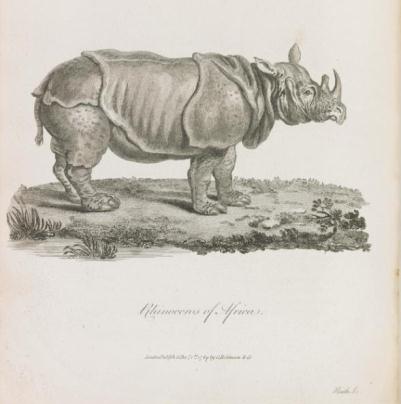
So it is important to ask what underlying conceptions of nature are informing our attempts to describe and represent the environmental crisis that is now undoubtedly upon us, both in Cornwall and California.
First of all, simply by using the vocabulary of crisis and catastrophe – natural enough given the frightening rate of extinctions around the globe – we risk falling into the discourse of apocalypticism, and even a return to Christian geology. It would at least be well to acknowledge that the brief interlude between 1750 and 1950 AD, the two hundred years between Diderot’s Encyclopédie and the atmospheric detonation of Teller’s thermonuclear weapon – when modernity’s clerisy declared that the future lay wide open under the sign of progress – is now over. Speeches at climate conventions are delivered over the corpse of Enlightenment optimism. Ironically, it is the scientists who, after waging a long war against Christian catastrophism in order to establish a deep secular past and by implication an open and contingent future, are now officiating as priests of doom.
Not that for those two centuries all talk of apocalypse was confined to the pulpit. Far from it. Even in the rosy dawn of enlightened optimism, reflected in William Godwin’s anarchist utopia – he was of the generation born in the 1750s – a counter-narrative was being forged in the halls of official knowledge. The Reverend Thomas Malthus, the world’s first paid economist – he taught at Haileybury College in the employ of the East India Company – launched a frontal attack on Godwin’s vision of an ample world adequate to human needs.
Economics, as defined by Malthus and taken as orthodoxy ever since, is the science of ‘choice under scarcity’. However, the primary cause of that scarcity – the clearances and enclosure of land (first described by Thomas More in ‘Utopia’) that dispossessed the commoners, including the indigenous inhabitants of this peninsula, and cut them off from their means of subsistence – was not a topic for polite discussion in 18th century drawing rooms any more than it is in today’s business schools.
Paradoxically, at the same time as it assumed scarcity, the science of economics also assumed infinitude, that is, the bottomlessness of nature as reservoir and resource. It is a striking fact that Thomas Huxley, a leading Victorian scientist, ‘Darwin’s bulldog’ and no stranger to the role of scarcity in the theory of natural selection that he advocated, could make the following statement, in a paper presented at The Great International Fishery Exhibition in London in 1884: “The cod fishery, the herring fishery, the pilchard fishery, the mackerel fishery, and probably all the great sea-fisheries, are inexhaustible; that is to say that nothing we do seriously affects the number of fish. And any attempt to regulate these fisheries seems consequently… to be useless.”
It is this fundamental contradiction that now threatens the equations of resource economists, not to mention life on earth. Endless growth may linger as an abstract ideal, but capitalism’s material waste – the ‘externalities’ dumped in land, ocean, and atmosphere – is a large turkey coming home.
In 1743, in the same decade that Diderot was compiling his Enlightenment compedium of craft skills and artisanal knowledge, John Wesley came to Land’s End. He found it “an awful site” and declared that it would “melt away when God ariseth in judgement.”
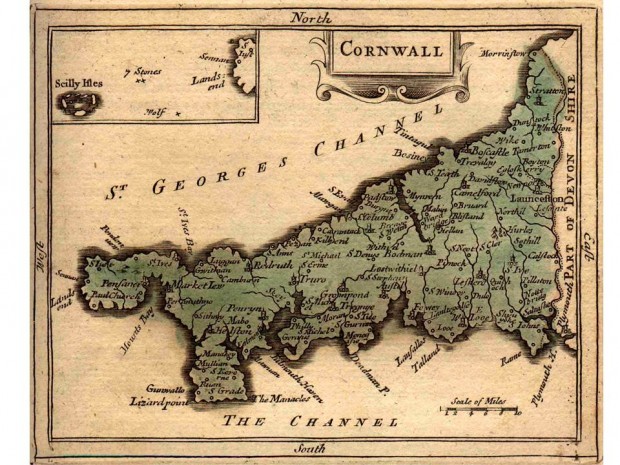
Yet by 1879 one Robert Carlyle pushed a wheelbarrow from Land’s End to John O’Groats, Scotland’s Ultima Thule. Why would this early ‘end-to-ender’ bother to do such a thing? Or why in the year 2012 would it be considered normal to inaugurate a peripatetic relay of torch-bearers at this British finisterre? What’s going on here? In an essay entitled ‘Why coasts are good to think with’, the historian of islands and coastality, John Gillis, notes: “They came [to Land’s End] by train from the industrial cities of the north, and from the colonies, fulfilling a childhood dream. ‘I’ve always wanted to see Land’s End’ said one working man. Behavior that astonished the locals, for many of whom it was still a forbidding place. ‘I’ve never seen it, and never want to’, one of them told W. H. Hudson in the 1920s.”
To understand this (slow) cultural transvaluation of the landscape we must invoke two powerful and historically linked movements, nationalism and Romanticism, which entailed respectively a new conception of ‘the coast’ and the subliming of wild places, particularly oceans and mountains. This great shift in the cultural perception of landscapes by the educated classes of Europe, inaugurated between 1750 and 1800 and articulated ideologically by schoolmasters, poets and artists, took place at the same moment – no accident – that ‘civilization’ (and its others) was being theorized by Lowland philosophers in Edinburgh. Their own hinterland – and its unruly highland ‘tribes’ – were being simultaneously subdued and mythologized.
Coasts, along with romantic moors and mountains, are the product of the nation state, of what the cultural geographer Denis Cosgrove called ‘the territorializing vision’. And vice versa. Nations are brought into existence by their edges. Land’s End became part of this nation’s sacred landscape, its mythic geography. Coasts, in other words, define the space of the nation, which itself, in the formulation of Benedict Anderson, is essentially an ‘imagined community’ invented by the European clerisy of the 18th and 19th centuries. Nationalism, argued Anderson, was a development within print culture and dependent on the mass readership of newspapers which in turn are a commodity made possible by the new technics of mechanical reproduction. (Here is not the place to explore the toxic legacies of the ‘nation’ as an ideal – toxic, in my view, because nationalism in the abstract tries per impossibile to align one folk, one language, and one territory, which is a prescription for ethnic cleansing and genocide).
Coasts ceased to be porous and have become, in the nation-state’s imaginary, fortified borders. In reality coasts are, as the marine biologist Rachel Carson put it, “an elusive and indefinable boundary”. Ecologically they are amphibious ecotones where two or several ecosystems merge – five, in the case of the Cornish peninsula. They are zones of maximum flow, exchange and biodiversity. Indeed, the tideline seems to have been the original home of our species, and the history of the last two hundred thousand years a story of co-creation on the human shore.
One terminus of the Romantic imagination is, then, the modern beach, cleared of all reminders of labour, and permitting a pleasing ocean vista, an unspoiled view of the horizon. It is the emptiness of the beach and the sea that now lures homo modernus. The sea is no longer a place to be inhabited, but a space to be contemplated. It was in reaction to this condition that Allan Sekula embarked on Fish Story and his more recent films on occluded maritime labour. Working waterfronts are now in fact rare. In the state of Maine only 20 miles of the entire 5,300 mile fractal coast are open to conventional maritime activities. It would be interesting to know the figures for Cornwall and California.
Landlubbers were astonished to discover that historically those who inhabited the coast mostly turned their backs and their houses to the view. Second-homers have had to punch holes in the old stone walls in order to rename the cottage ‘Seaview’. Meanwhile, many fishermen and their families have been priced out of the waterfront and must commute from the hinterland, displaced by incomers, downshifters and holidaymakers. The fishing village has become a prime destination for nostalgia tourism. Nostalgia was first noted in the 17th century as a serious medical condition among Swiss mercenary soldiers, unfit for duty having been stricken by homesickness. Today, nostalgia is the foundation of the antiques and tourism industries, a free-floating condition directed at places and pasts typically not known personally, and with serious consequences for those places and people toward which it is directed.
The fishing village is itself a product of land clearances and the destruction of the commons which provided livelihood outside the commodity/cash nexus. It is no less a product of modernity than the factory or the freeway. Modern agriculture has in turn come to be modelled on factory production and actually represents the transfer back into the countryside of the abiotic production of commodities using mechanized tools.
In the Atlantic world, fishing began mostly as a freshwater occupation, and remained a seasonal occupation of farmers (‘one boot in the boat and the other on land’) who left their fields and plots when migrating fish came close inshore. Until the 18th century coastal villages were rare; the shore was associated with danger and death. Fishing villages began to appear in the 16th century as a result of land enclosures. Peasants were not so much drawn to the sea as driven to it. Often the motive was to earn cash to pay rents; in other words, it represented a shift from commoning to capitalist relations. And without inland or overseas markets for the catch, these communities could not have existed. Cornish fisherfolk, for example, were very conscious of their dependence on the edicts of the Vatican for their pilchard markets in Catholic Europe and, for a period, in the slave plantations of the Caribbean.
Likewise with the Puritans of Massachussets, cod was the international commodity that saved them. Samuel Morison put it bluntly: “God performed no miracle on New England soil. He gave the sea. Stark necessity made seamen of would-be planters.” Fishermen, in other words, were mostly not a ‘breed apart’ but remained jacks of all trades moving back and forth across the tide line. The word ‘maritime’ used to refer to the lands bordering the sea, not the sea itself. They had to be mobile, to be familiar with ‘a hundred ports’ – that is, far more cosmopolitan and innovative than their upcountry neighbours. Notwithstanding, in the same way that folklorists discovered the ‘folk’ just as it was being ushered into extinction, so artists and writers scoured the coasts for natural, original, denizens, untainted by industrialism.
The clearing of the coast, and the invention of the modern beach, has been a gradual process. A century ago the most desirable seascapes invariably included vessels and other marine activity, and we shall be exploring this tomorrow on the field trip. We shall be posing the questions: How is this process represented? What kinds of work are portrayed and figured? What attitude to extraction – from fishing ground and quarry – is being proposed by the artist or photographer? Is it reasonable to speak of art itself as a matter of extraction?
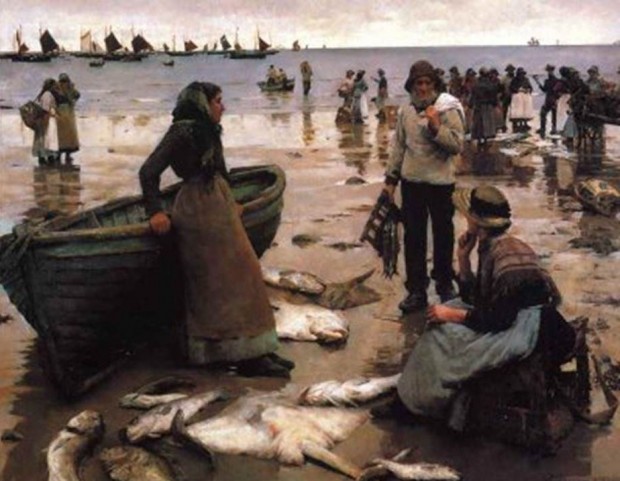
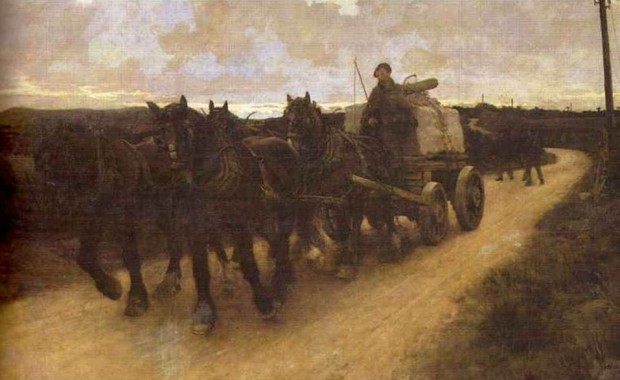
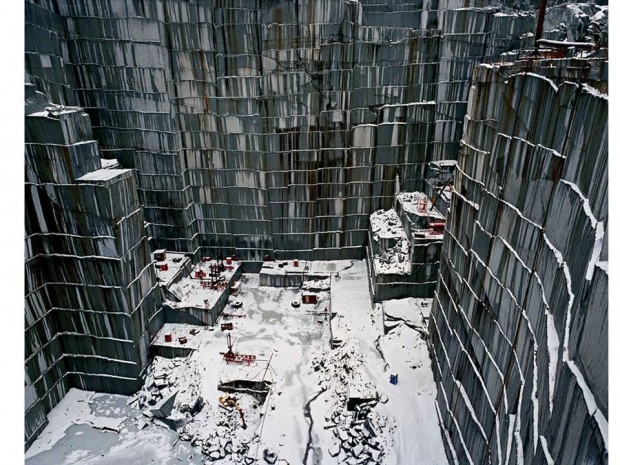
In this context the Cornish scenes of the English expressionist Edward Burra are interesting for their clear rejection of the picturesque tradition of Forbes and company. A native of the south Kent coast, “he blocked his window with hardboard in order to avoid seeing the view across Rye. A picturesque town of old rippling roofs and cobbled streets, a tea-shop place was the last thing he needed… Never liking it, it was typical that he should live in Rye all his life. He preferred the gravel pits and sheds on the road to the harbour. He liked the high view down on to the recreation ground, the fisty trees, the debris generated by the workshops and fishing boats on the winding estuary. He liked the way the slug of Stone Hill crept across the far side of the Marsh… In 1953 he moved into… a house built on the site of a Methodist chapel bombed during the war. From here, high up, he could look across the Marsh with its snaking river, razor-sharp dikes and flashes of lying water.”
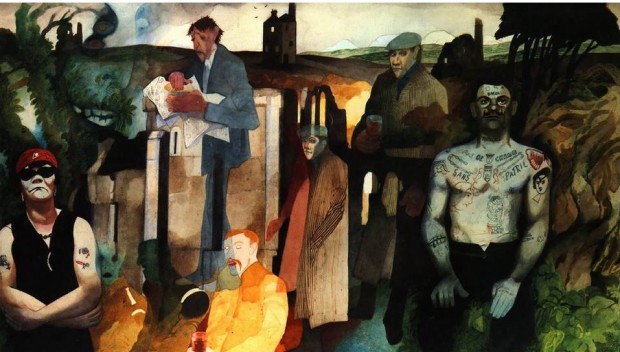
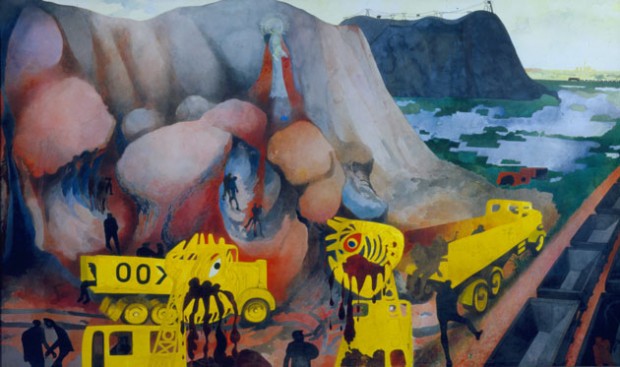
The watery edges of the modern nation are viewed as peripheral in the eyes of landlubbers and centralizing state functionaries. In fact, thinking continentally has come to dominate the geopolitics of the contemporary world. Jonathan Raban noted that, “people who live on continents get into the habit of regarding the ocean as journey’s end, the full stop at the end of the trek.” Within a continental or mainland logic, ‘insular’ has become a term of abuse. And ‘peninsula’ a milder epithet.
Penwith is a peninsula on a peninsula on an island. Taking a mainland, and ever more a continental perspective, that makes Cornwall seem very ‘remote’. But in fact this view of the relationship is quite recent. There have been times when the reverse was the case – it was continents that were remote and isolated, the outposts of islands. Until the end of the 18th century, ‘insularity’ was associated with mainlands.
Islands are figures for paradise and hell, the locus of human projections – we are free there, and trapped there. They are places of solitude and cosmic connection. Islands and peninsulas (near-islands) are sites of pilgrimage, scientific exploration, and summer sojourn. In Western cosmogony water equals chaos and land means order. Islands and peninsulas are betwixt and between, partaking of earth and water; they are terraqueous, in the 18th century phrase, liminal spaces, thresholds, the location of rites of passage, where new worlds and a different life may be imagined or initiated.
Somewhere to the west, where the sky met the sea, heaven and earth were connected, and the natural gives way to the magical. Elysium or the Garden of Hesperides, home for dead heroes, in the Isles of the Blest, or the Fortunate Isles.
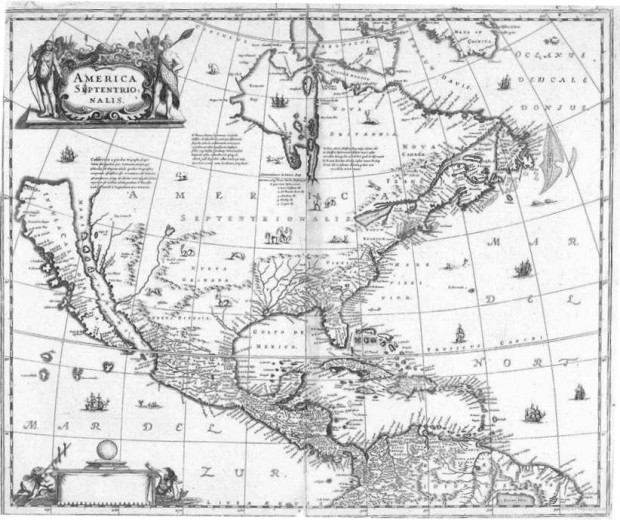
Cornwall and California, each occupying the ‘far west’ in their respective cultural myth-spaces, share more than just a hold on the utopian imagination. The histories of the Tin Isles (Herodotus’ Cassiterides) and the Golden State are connected through the accidents of crustal geology and the consequent blessing/curse of precious metals. The planetary business of extracting tin, gold and other hard-rock commodities, and the international labour market in miners and engineers, has meant that ‘Almaden’, ‘Sierra Nevada’, ‘Klondyke’, ‘Wallaroo’, ‘Kimberley’ became household words in Redruth and Camborne. Conversely the names Tresidder, Penrose and Kittoe are familiar in Palo Alto, Kalgoorlie and Valparaiso.
Zones of extraction become sites of extinction, geographies of sacrifice.
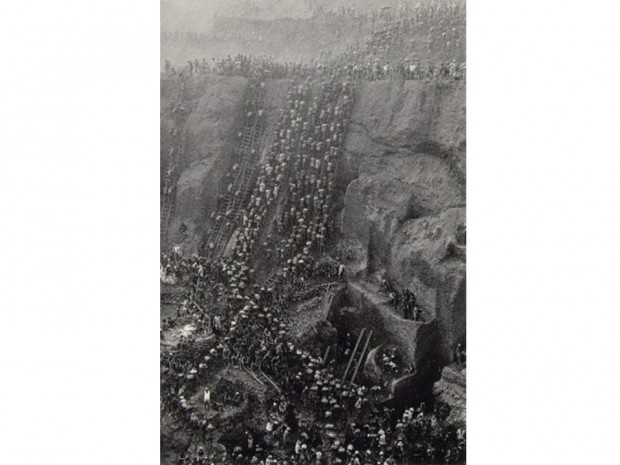
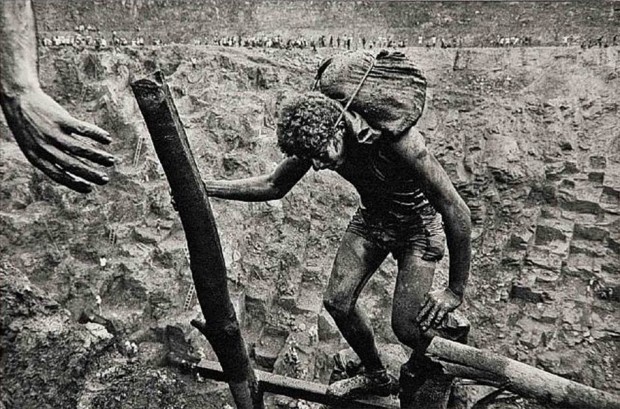
Presidio Point, San Francisco’s Land’s End, was chosen as the site of James Earle Fraser’s sculpture of the defeated Indian warrior, End of the Trail. It was the hit of the Panama Pacific International Exposition of 1915 and marked what contemporaries saw – and welcomed – as the end of Native American civilization.
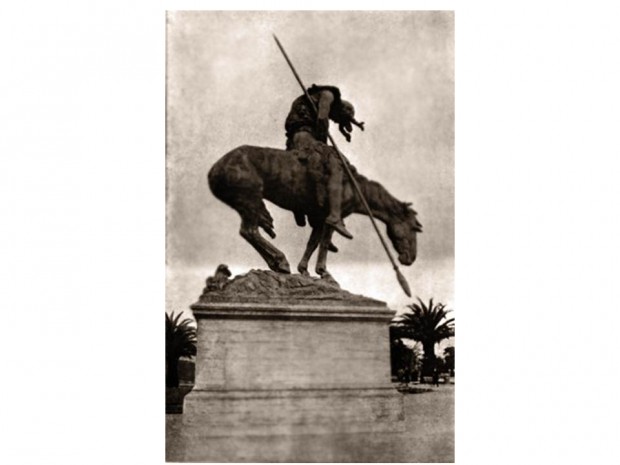
The campaigns of extermination, the extinction of fishstocks and languages, the heavy metal poisoning of aquifers, the siltation of waterways and rivers – these are all of a piece.
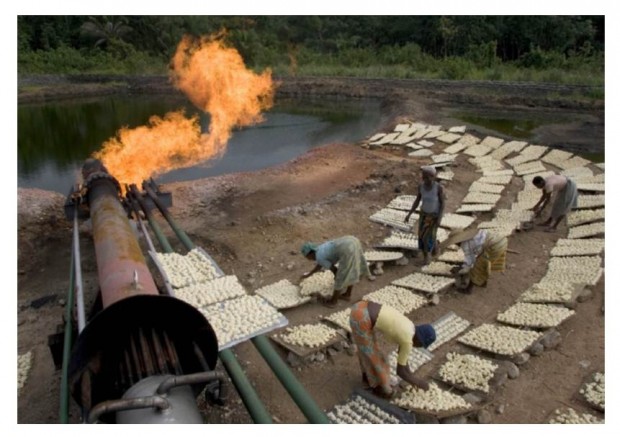
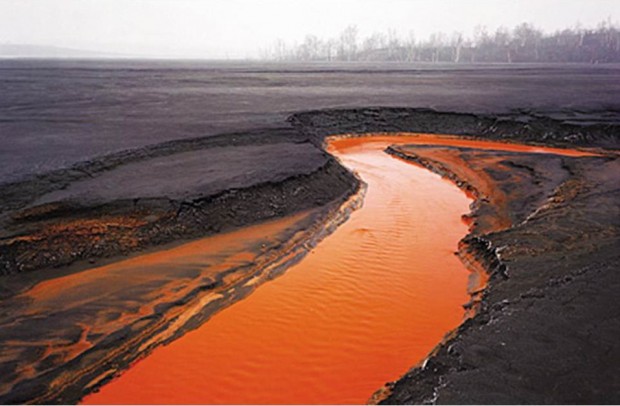
The state’s appetite for gold and silver – initially to pay soldiers (Alexander’s armies required half a ton of silver bullion a day in wages) – has given rise, across the globe, to brutal regimes of slave and coerced labour. When the early Ming dynasty abandoned paper money (which requires a high degree of social trust) and reverted to the silver standard in the wake of popular struggles, the sudden enormous demand for silver and precious metals reverberated around the world. Most of the loot from the New World and the metal extracted by the Spanish of the mines of Mexico and Bolivia – above all Potosi – ended up in China.
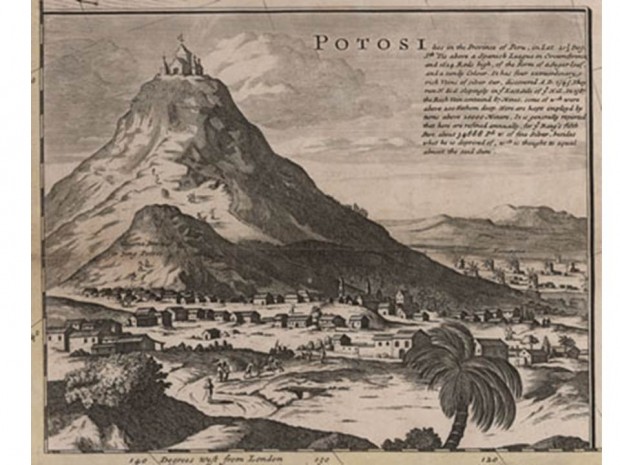
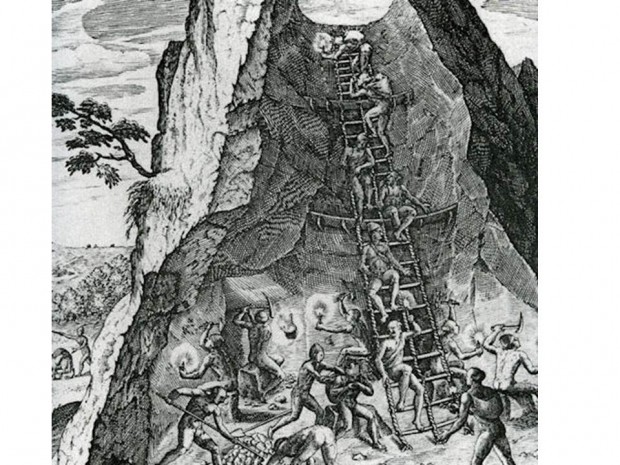
The process of extraction makes quarrying and mining even more dangerous occupations than deep sea fishing; it also accounts for the intense bonds of solidarity forged in the conditions experienced underground, in the shafts and at the rockface. Mineworkers led Britain’s first and only General Strike of 1926, and the prisoner-miners in the Siberian gulag launched the first effective challenge to Stalinism when they protested the appalling conditions around the Vorkuta pits. In What Work Is, the California poet Philip Levine, recalling his apprenticeship as a young knight of labour, describes the rituals of toil in the kingdom of Pluto, a kind of daily death and resurrection:
…I would descend
step by slow step into the dim world
of the pickling tank and there prepare
the new solutions from the great carboys
of acids lowered to me on ropes…
…A gallon of hydrochloric
steaming from the wide glass mouth, a dash
of pale nitric to bubble up, sulphuric to calm,
metals for sweeteners, cleansers for salts,
until I knew the burning stew was done.
Then to climb back, step by stately step, the adventurer
returned to the ordinary blinking lights
of the swingshift at Feinberg and Breslin’s
First-Rate Plumbing and Plating with a message
from the kingdom of fire…
In Imperial San Francisco: Urban Power, Earthly Ruin, Gray Brechin tells the history of California as a succession of devastating resource strikes, originating in the gold fields of the Sierra (making it in part, therefore, a Cornish story), then radiating out in a series of lethal pulses along the littoral, into the hinterland, and out into the Pacific.
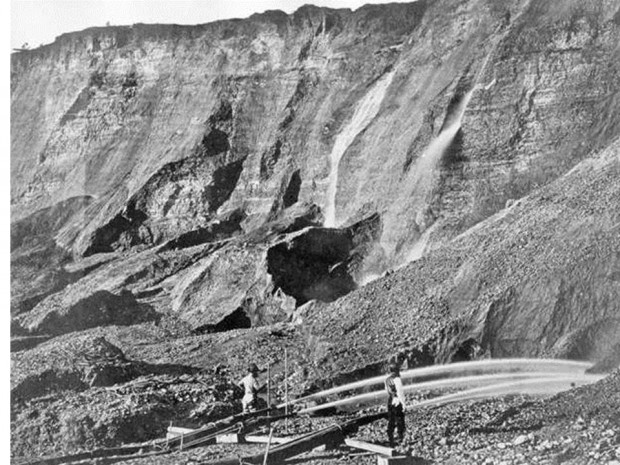
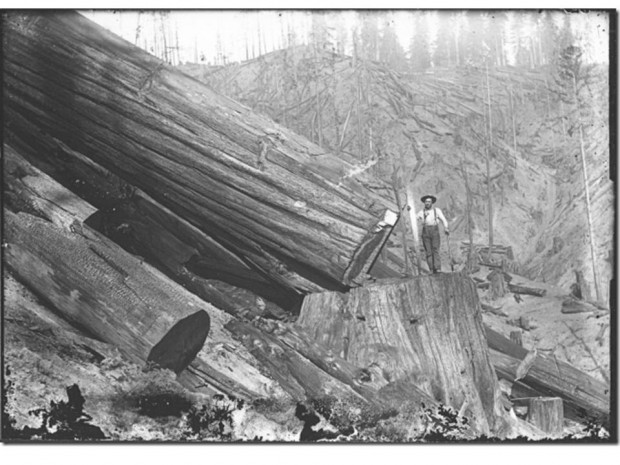
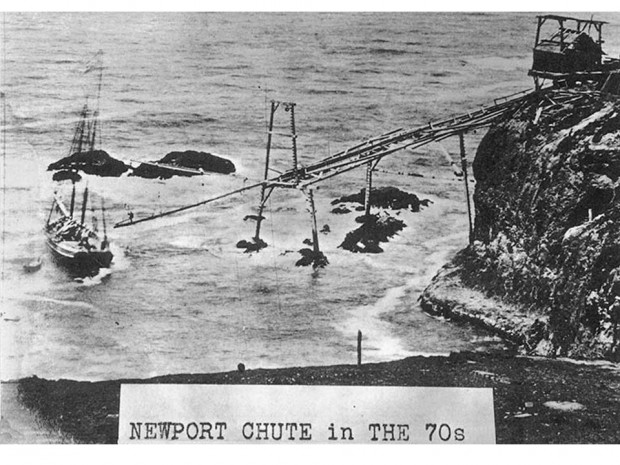
The Monterey laboratory of ‘Doc’ Ricketts, author of Between Pacific Tides, a classic of marine biology, epitomised the teeming life that flourished and died along the northern California coast. John Steinbeck, who became Rickett’s friend and partner in the grandiosely named Pacific Biological Laboratories, said that Doc’s lab was, “as strange an operation as ever outraged the corporate laws of California,” a bewildering shambles of a place with its deep litter of specimen jars containing, “the lovely animals of the sea, the sponges, the tunicates, anemones, the stars and buttlestars, and sunstars, the bivalves, barnacles, the worms and shells, the fabulous and multiform little brothers, the living moving flowers of the sea”, not to mention dozens of cages of rattlesnakes and mice awaiting onward shipment to labs across the country, holding-tanks for squid and octopi, embalming equipment, dissecting trays, microscopes…..all the tackle of a working marine biologist.
A few doors along Cannery Row from Doc Ricketts’ laboratory, Knut Hovden, graduate of Norway’s National Fisheries College, was devising the mechanization of the small, and sustainable, sardine industry. He immediately (in the twenties) went about inventing new purse-bottomed nets, impounding pens, automatic cookers and can-soldering machines. In what amounted to marine strip-mining, the new extractive techniques caused, within Hovden’s own working lifetime, a holocaust of Sardinops caeruleus, the silver harvest that thrived on the plankton upwelling off Monterey Bay, whose underwater canyon walls plunge 10,000 feet. The protein-rich sardines, mass-produced in Fordist style in the early forties, went to feed the huge American armada in the Pacific theatre, and their reduced entrails were trucked north to fuel the emerging poultry factories of Petaluma.
The story of Cannery Row — its birth, its mythification by Steinbeck, its death by grotesque overfishing within a couple of years of the novella’s publication, and later its rebirth as a theme park — is a sad epitome of Californian environmental history. We are only now beginning to comprehend the full dimensions of the ecological and human catastrophe that followed 1849 and the invasion of the goldfields; its effects were felt — are yet being felt — not just in the immediate hinterland of the Bay Area, but all along the Pacific littoral, home to many peoples, and as far away as Hawaii, where the sugar industry, headquartered in San Francisco, shattered the island ecosystems.
Yet out of the shambles of such ecological disasters, not to mention failed states and IMF shock therapies, a movement of movements in opposition to neoliberalism’s new round of global enclosures is slowly coming into being. The sites and modes of resistance are – have to be – as motley and protean as the sites and modes of the new enclosures. The time of nostalgia for the factory gate and the pit head, for fetishizing the point of production, is long gone. The urgent and necessary task is to connect the struggles at all points, north and south, in the circuits of the commodity form – at the points of dispossession, production, reproduction, and consumption. That means, for example, perceiving and then articulating the interests linking the landless commoners of the Movimento Sem Terra in South America, the Norwegian biologists trying to insert genes not into other lifeforms but into their ecological context at different scales, and the small but growing movement in the San Francisco Bay Area that sees the Creative Commons license as conceding too much, and is challenging the very category of ‘intellectual property’ as a form of enclosure, the kind that is driving GM agribusiness and the biofuels fiasco. And there are lessons to be learnt from the lobster commoners of Maine, that can inform the local attempts here in West Cornwall to move beyond, on the one hand, a trawling free-for-all and, on the the other, an abstract centralized quota system.
Quite apart from the practical problems on the ground and along the shore, there is hard conceptual work to be done. If the commodity form has its metaphysical subtleties and theological niceties, then what might be called the ‘common form’ also has its philosophical conundrums, which urgently demand our attention. We need to enlist the help of anthropologists and historians of commoning, usufruct and coincident use-rights; we need to mobilize local knowledges around the planet, and to put commoners in connection. Cousin Jack and Cousin Jenny in new/old conversations with Jacques and Juanita.
One encouraging example, published in the Proceedings of the National Academy of Sciences and reported in the New Scientist of 7th October 2009, should be placed in the folders of all the World Bank and IMF cadres and the Brussels Eurocrats, who are still bent on commodifying the world’s woods, airs and waters. It turns out that the commoners of the earth do a better job of managing the earth’s forests than either state control or privatization. In the first study of its kind, which “tracked the fate of 80 forests worldwide in 10 countries across Asia, Africa, and Latin America, over 15 years and under differing models of ownership and management”, Chhatre and Agrawal, two researchers at the University of Michigan, conclude that, “locals would also make a better job of managing common pastures, coastal fisheries and water supplies”. They further suggest that, “carbon storage potential is especially improved when community organisations and their institutions incorporate local knowledge and decentralized decision making” to “restrict their consumption of forest products”. This finding is a direct rebuttal of Hardin’s 1968 ‘Tragedy of the Commons’ credo that remains the fact-free, ideological cornerstone of IMF and World Bank policies.
Tropical forest under local management stores more carbon than government-owned forest because the local commoners have a long-term interest in ensuring the forest’s survival. This will perhaps be less than surprising to those unschooled in Hardin-style assumptions.
In reaction to neoliberal dogma, commons-talk has become widespread in recent years, and that should not be surprising. Indeed a system that produces such staggering amounts of waste requires its own perverse variety of commons, to act as a sink and sewer. The chief economist of the World Bank, Larry Summers, in a notorious (leaked) internal memo, asked – with real honesty – whether, on a standard actuarial cost-benefit analysis, the Third World wasn’t seriously underpolluted? The assumption here is that the early death of a Southern peasant is preferable to that of a Northern worker because it’s cheaper, calculated in terms of expectable lifetime income forgone. The territory and the bodies of the planetary poor become, in other words, commons of a sort. On the side of extraction, it is a reasonable bet that soon enough powerful states will deploy the language of common property to declare strategic minerals ‘global commons’ (inconveniently under the feet of Peruvians or Congolese), which are to be administered by the United Nations.
Yet suspicion of ‘globe-speak’ and its dissimulation of class and gender oppression, not to say its finessing of centuries of reparations now owed the South by northern extractive industries, should not throw us uncritically into the embrace of ‘the local’, whatever the beauties of farmers’ markets and foodsheds. For one thing, who better than the transnational corporation at thinking globally, acting locally? More importantly, the very notion of ‘local’, when it comes to, say, the atmosphere, may be just as problematic as the abstraction of the ‘global’. The airborne particulates in my town of Berkeley now include measurably higher levels of coal dust from the new plants coming online in China. Is the level of production in China not a ‘local’ concern, especially for the lungs of young children in the Bay Area, many of whom are already victims of the race/class nexus that dictates a cascade of inequities.
Talk of coal dust and the planetary atmosphere returns us to the central theme of our gathering: extraction, here and across the world, in Cornwall and California, two favoured spots on our terraqueous globe.
I would like to propose as inspiration and rubric for our exchanges over the next three days, the words of two unacknowledged legislators – one an Edwardian poet, art editor and the son of a coal merchant, the other a radical Romantic looking back ‘in that blessed dawn’ on the events of 1789.
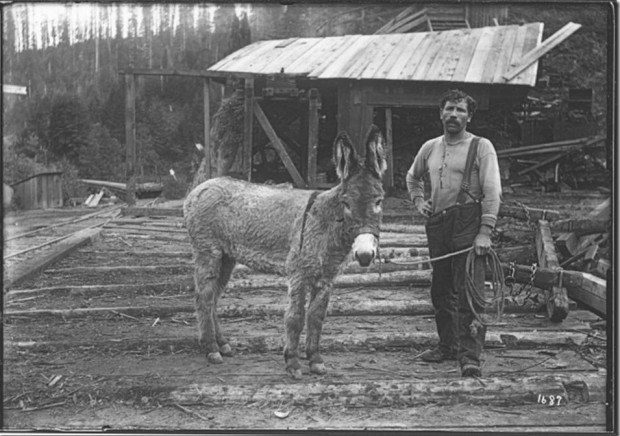
First, Ralph Hodgson’s The Bells of Heaven:
‘Twould ring the bells of Heaven
The wildest peal for years,
If Parson lost his senses
And people came to theirs,
And he and they together
Knelt down with angry prayers
For tamed and shabby tigers
And dancing dogs and bears,
And wretched, blind pit ponies,
And little hunted hares.
and, to close, this from Wordsworth’s The French Revolution as it Appeared to Enthusiasts at its Commencement:
‘When Reason seemed the most to assert her rights,
When most intent on making of herself
A prime Enchantress–to assist the work
Which then was going forward in her name!
Not favoured spots alone, but the whole earth,
The beauty wore of promise, that which sets
(As at some moment might not be unfelt
Among the bowers of paradise itself )
The budding rose above the rose full blown.
Now was it that both found, the meek and lofty
Did both find, helpers to their heart’s desire,
And stuff at hand, plastic as they could wish;
Were called upon to exercise their skill,
Not in Utopia, subterranean fields,
Or some secreted island, Heaven knows where!
But in the very world, which is the world
Of all of us,–the place where in the end
We find our happiness, or not at all!’
Image captions:
1. Albrecht Dürer, Rhinoceros, 1515
2. James Heath, engraving, Rhinoceros of Africa, 1789, in James Bruce, Travels to Discover the Source of the Nile, 1790
3. Map of Cornwall, in Francis Grose, The Antiquities of England and Wales, 1783
4. Stanhope Forbes, A Fish Sale on a Cornish Beach, 1885
5. Stanhope Forbes, The Quarry Team, 1894
6. Rock of Ages #15, Active Section, E.L. Smith Quarry, Barre, Vermont, Ed Burtynsky, 1991.
7. Edward Burra, Landscape, Cornwall with Figures, 1976
8. Edward Burra, Picking a Quarrel, 1968-9
9. America Septentrionalis Mappa, Hondius/Jansson, 1640
10. Serra Pelada Goldmine, Brazil, Sebastião Salgado, 1986
11. Serra Pelada, Hand, Sebastião Salgado, 1986
12. The End of the Trail, James Earle Fraser (sculptor), 1915
13. Flaring in the Delta, Ed Kashi, in Michael Watts (ed.), Curse of the Black Gold: 50 Years Of Oil In The Niger Delta, Powerhouse Books, 2008
14. Nickel Tailings #34, Sudbury, Ontario, Canada, Ed Burtynsky, 1996
15. Potosi, inset, Map of South America, Hermann Moll, 1720
16. The Potosi Mines. Engraving by Theodor de Bry. In: Girolamo Benzoni, Historia Americae Sive Novi Orbis, pars sesta, 1596.
17. Goldmining in the Dutch Flat District,1860s, Placer County Archives, California
18. Fallen Giant (Redwood Empire), courtesy of C. Winslow, Mendocino, CA
19. Newport Chute in the 1870s (Redwood Empire), courtesy of C. Winslow, Mendocino, CA
20. Man and Mule (Redwood Empire), collection of C. Winslow, Mendocino, CA
For further details about Iain Boal’s Keynote see Programme.
